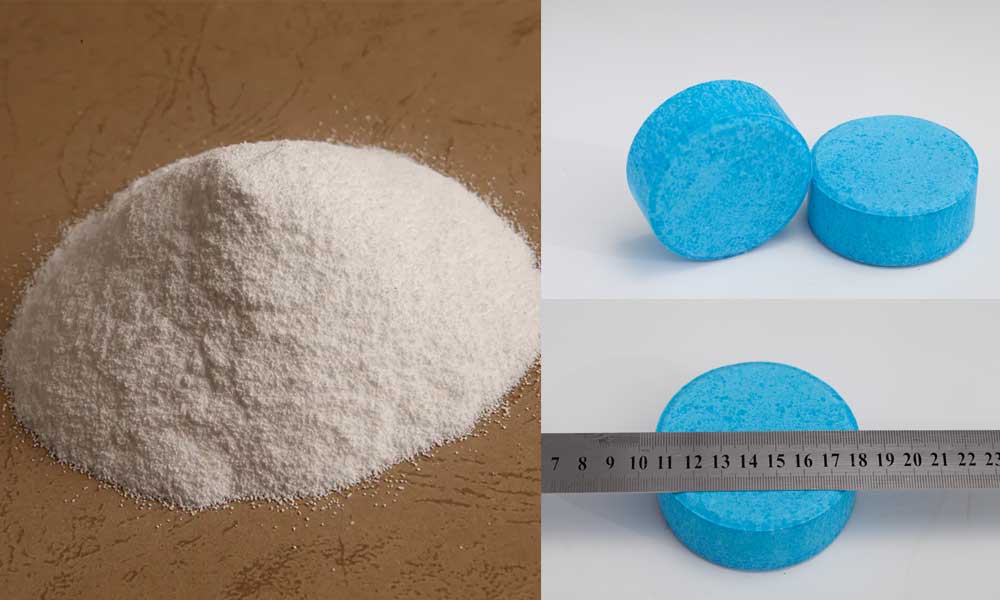Циануровая кислота, белый кристаллический порошок с ярко выраженной химической структурой, привлёк к себе значительное внимание благодаря своему многогранному применению в различных отраслях промышленности. Это соединение, состоящее из атомов углерода, азота и кислорода, продемонстрировало исключительную универсальность и эффективность, что привело к его широкому применению в различных отраслях. В данной статье подробно рассматриваются области применения циануровой кислоты, рассматриваются её преимущества и подчеркивается важность экологически ответственного подхода к её использованию.
Химикаты для очистки воды в бассейнах
Одно из наиболее известных применений циануровой кислоты — уход за бассейнами. Это соединение используется для стабилизации хлора в воде бассейна, повышая его эффективность и снижая необходимость в частом повторном хлорировании. Циануровая кислота образует защитный барьер вокруг молекул хлора, предохраняя их от разрушающего воздействия ультрафиолетовых лучей. Это обеспечивает более длительное сохранение активности хлора в воде, тем самым снижая общий расход химикатов и расходы на обслуживание бассейна для владельцев бассейнов.
Антипирены и ингибиторы горения
Циануровая кислота играет важную роль в повышении огнестойкости различных материалов. В сочетании с другими химическими веществами она образует антипирены и ингибиторы горения, используемые в текстильных изделиях, пластике и других горючих материалах. Эти добавки выделяют газы при воздействии высоких температур, создавая барьер, препятствующий распространению пламени и замедляющий процесс возгорания. Это применение доказало свою важнейшую роль в защите жизни и имущества в различных пожароопасных отраслях.
Аграрный сектор
В сельском хозяйстве циануровая кислота используется в качестве стабилизатора азота в удобрениях. Азот, жизненно важный элемент для роста растений, может попадать в окружающую среду в результате таких процессов, как вымывание и улетучивание. Добавление циануровой кислоты в удобрения способствует замедлению этих процессов, позволяя растениям более эффективно усваивать азот. Это не только повышает урожайность, но и снижает воздействие чрезмерного стока азота на окружающую среду, который может способствовать загрязнению воды.
Фотография и синтез красителей
Циануровая кислота используется в производстве фотохимикатов и красителей. Её уникальная химическая структура делает её подходящим промежуточным продуктом для синтеза различных красителей, используемых в текстильной и полиграфической промышленности. Стабильность этого соединения и его способность образовывать комплексы с ионами металлов играют решающую роль в этих областях применения, обеспечивая яркие и стойкие цвета тканей и принтов.
Экологические соображения и устойчивые практики
Несмотря на многочисленные преимущества циануровой кислоты, её использование следует тщательно продумать с учётом её воздействия на окружающую среду. Например, чрезмерное использование циануровой кислоты в бассейнах может привести к её повышению в воде, что негативно скажется на её биоразлагаемости и потенциально навредит водным экосистемам. Важно найти баланс между использованием циануровой кислоты для продления срока службы хлора и применением альтернативных методов дезинфекции бассейна для предотвращения его накопления.
Кроме того,Производители CYAРекомендовано внедрять устойчивые методы производства, минимизирующие отходы и потребление энергии при синтезе циануровой кислоты. Также следует внедрять надлежащие методы утилизации и переработки для предотвращения загрязнения водоемов и почвы.
Применение циануровой кислоты охватывает различные отрасли, демонстрируя её адаптивность и полезность в современном обществе. Её влияние огромно: от обслуживания бассейнов до пожаротушения, от сельского хозяйства до синтеза красителей. Однако ответственное использование циануровой кислоты имеет решающее значение для предотвращения негативных последствий для окружающей среды. По мере того, как промышленность продолжает внедрять инновации, внедрение экологически устойчивых методов производства и применения циануровой кислоты позволит использовать её преимущества без ущерба для благополучия планеты.
Время публикации: 23 августа 2023 г.


